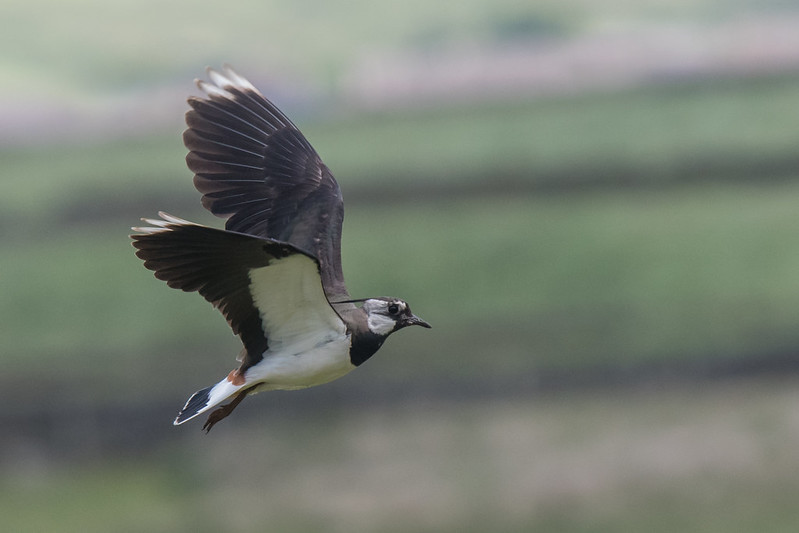
A farmland bird which has declined greatly due to agricultural changes – notably the switch from spring-sown to autumn-sown cereals, drainage of wetlands and the move from hay to silage. In southern England at least, Lapwings have become, as breeding birds, much more concentrated on nature reserves.
But there you will still hear the peee-wit of the Peewit. Don’t you think that Peewit is a much nicer name than Lapwing? And certainly than Northern Lapwing which is what we’re supposed to call this bird now.
Here’s its song. First from a bird in Estonia:
And here is a bird from Surrey, England:
Peewit! It’s as simple as that.
[registration_form]
Peewit seems to have somewhat dropped out of fashion but it was more widely used in the past and is the name used in some older books. ‘Green plover’ used to be commonly given as another alternative name for this bird but I have the impression that that is disappearing as a name (I think both lapwing and peewit are more evocative so it is perhaps no great loss).
Germans (Kiebitz) and Dutch (Kievit) both go with an onomatopoeic name. Rev Charles Swainson’s Provincial Names of British Birds (1885) gives the following names: Lipwingle, Lymptwigg, Flopwing, Peewit, Piewipe, Puit, Peaseweep, Weep, Wipe, Tewhit and Hornpie (from the crest) amongst others. He also states that it is called Dix-huit (18) in French which is presumably based on the sound of the call. I have never seen it referred to as that anywhere else and the usual French name is vanneau huppé (‘crested plover’).
A lovely bird by any name.
Tuwhit or Chewhit is what I’ve heard it called by various country folk in the Dales. It may be a relatively simple song but the full deal with the fast tumbling flight is to me an expression of exuberant joy. They were in all the surrounding fields when I was growing up between Harrogate and Knaresborough. From those fields they are now gone but can be found not far away on old gravel pit reserves, especially Nosterfield NR north of Ripon. The moorland edge of Nidderdale is also very good for them in places still, although even there they used to be in almost every field but no longer due to silage and heavy grazing by wooly maggots, sorry sheep. Little beats a close view of a Lapwings back in the sun, with that dull green black becoming alive with iridescent greens, bronze, blues, violet and purple.
They are a scarce bird in this part of mid Wales.
Our Otmoor peewits give a much more complex bubbling call rather than just saying their name. In fact I have to stop and listen properly if I hear a curlew there to make sure I haven’t confused the two.
Peewit was the name my Dad taught me. We heard them regularly when I helped on his allotment not far from Port Meadow in Oxford.
Agree Lyn, the song is much more complex than the name suggests.
There are also the wing beat accompanying sounds as the birds tumble and swoop. Peewits are some of the first birds to sing or call in the March dawn chorus, often staring before Grey Partridges or Skylarks.